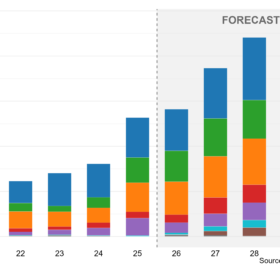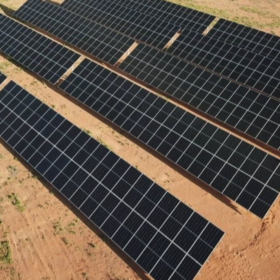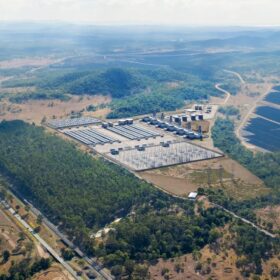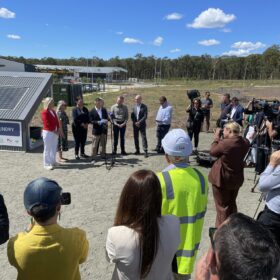New Zealand government-backed gen-tailer Meridian Energy and Nova Energy, a Wellington-headquartered subsidiary of Todd Corporation, have finalised a joint venture to build and operate the 400 MW Te Rahui Solar Farm to be constructed near Taupō in the centre of the country’s North Island.
The joint venture also said it has secured $270 million (NZD 300 million) in financing for the first 200 MW phase of the project and a financial investment decision for the second 200 MW stage is pending.
Victoria-based Beon Energy Solutions has been awarded construction and initial operations and maintenance contracts.
The Te Rahui project will comprise approximately 900,000 solar panels spread across a 1,022-hectare site at Rangitāiki, about 35 kilometres east of Taupō. A substation will also be built on site to connect to New Zealand’s national network operator Transpower’s 220 kV transmission line that bisects the northern part of the property.
First power on phase one is expected in mid-2026, with full power in mid-2027. Once complete, the 400 MW PV power plant will generate enough clean electricity to power about 100,000 homes.
Project offtake will be shared 50-50 by way of a power purchase agreement with Meridian for 100% of the offtake and a contract for difference with Nova for 50%.
Meridian Chief Executive Officer Mike Roan said the joint venture is a great example of how collaboration can move big projects forward for the benefit of electricity users.
“Te Rahui is a big undertaking and sharing the investment and offtake makes strong commercial sense for both parties, while the project will also benefit home and business customers by further strengthening security of supply. It’s a real win-win,” he said.
Roan said the Te Rahui Solar Farm is the latest step in Meridian’s build-out of large grid-scale solar, wind and battery energy storage projects with plans to start seven new renewable energy projects by 2030.
It has already delivered the 100 MW / 200 MWh Ruakākā battery energy storage system (BESS) and has received consents for a 100 MW battery in Manawatū and the 130 MW Ruakākā Solar Farm, with construction on the solar farm due to start shortly. It also has a portfolio of wind projects in the pipeline.
“Having invested more than $1 billion in the past five years, we have a further $2 billion planned for investment over the next three years,” Roan said. “These projects will add over 1,000 MW of new capacity, a 5% increase to the electricity system.”
Roan said the projects will help make New Zealand’s electricity system more resilient and affordable.
“I believe it will also enable future economic prosperity,” he said. “With one of the most renewable grids in the world, New Zealand can take advantage of the opportunity to create and market more green products internationally.”
This content is protected by copyright and may not be reused. If you want to cooperate with us and would like to reuse some of our content, please contact: editors@pv-magazine.com.









By submitting this form you agree to pv magazine using your data for the purposes of publishing your comment.
Your personal data will only be disclosed or otherwise transmitted to third parties for the purposes of spam filtering or if this is necessary for technical maintenance of the website. Any other transfer to third parties will not take place unless this is justified on the basis of applicable data protection regulations or if pv magazine is legally obliged to do so.
You may revoke this consent at any time with effect for the future, in which case your personal data will be deleted immediately. Otherwise, your data will be deleted if pv magazine has processed your request or the purpose of data storage is fulfilled.
Further information on data privacy can be found in our Data Protection Policy.